Iomega Prestige Desktop Hard Drive, 2.0TB Handleiding
Iomega
Externe harde schijf
Prestige Desktop Hard Drive, 2.0TB
Bekijk gratis de handleiding van Iomega Prestige Desktop Hard Drive, 2.0TB (32 pagina’s), behorend tot de categorie Externe harde schijf. Deze gids werd als nuttig beoordeeld door 98 mensen en kreeg gemiddeld 4.3 sterren uit 49.5 reviews. Heb je een vraag over Iomega Prestige Desktop Hard Drive, 2.0TB of wil je andere gebruikers van dit product iets vragen? Stel een vraag
Pagina 1/32

Quick Start Guide
Guide de démarrage rapide
Schnellstart-Handbuch
Guida di installazione rapida
Guía de instrucciones rápidas
Guia de uso rápido
Snel aan de slag
Snabbstartguide
Introduktion
Hurtigreferanse
Pikaopas
Gyors útmutató
Stručná příručka
Wprowadzenie
Краткое руководство по началу работы
Οδηγός γρήγορης εκκίνησης
Hızlı Başlama Kılavuzu
Desktop
Hard Drive
USB 2.0

2
Quick Install • Installation rapide
1. Connect the included power supply to the back of the
drive and to a power outlet.
CAUTION! Do not move the drive while it is powered up
to avoid drive damage or data loss.
2. Connect the USB cable to the back of the drive and
your computer. Make sure the power switch on the
back of the drive is ON.
PC Users: The drive icon should appear in My
Computer or Windows Explorer.
Mac Users: You will need to reformat the drive. See
instructions below.
CAUTION! To prevent data loss, do not disconnect the drive
during data transfer (drive activity light flashing). Always
use the safe removal procedure for your operating system
when disconnecting the drive.
Formatting the Drive for Mac OS
The drive ships formatted NTFS. Use Disk Utility to reformat
the drive Mac OS Extended Journaled.
NOTE: The following instructions work for Mac OS X, version
10.4 or above. For Mac OS X version 10.1 through 10.3.9,
use Disk Utility, Erase to format the drive. See Mac Help if
you need more detailed instructions.
1. Select Applications Utilities → →Disk Utility
2. In the left hand column, click on the drive icon for the
Iomega Hard Drive. Make sure you click on the orange
drive icon, not the volume icon.
3. Select the Partition tab.
4. Change Volume Scheme from Current to 1 Partition.
5. Select Mac OS Extended (Journaled) from the Format
drop-down menu.
6. Click on the button.Options
7. Select the type of partition needed for your Mac:
GUID Partition Table for bootability on an Intel-based
Macintosh computer.
Apple Partition Map for a PowerPC-based Mac.
8. Click OK.
9. Click the Partition button. The drive is ready to use
when the format completes.
1. Connectez l’alimentation fournie à l’arrière du disque,
puis connectez-la à une prise secteur.
ATTENTION ! Ne déplacez pas le disque lorsqu’il est sous
tension pour éviter tout dommage ou perte de données.
2. Connectez le câble USB à l’arrière du lecteur et à votre
ordinateur. Vérifiez que l’interrupteur d’alimentation à
l’arrière du lecteur est sur ON.
Utilisateurs de PC : l’icône du disque dur doit apparaître
sur le Poste de travail ou dans l’Explorateur Windows.
Utilisateurs de Mac : vous devez reformater le disque dur.
Reportez-vous aux instructions ci-dessous.
ATTENTION ! Pour éviter toute perte de données, ne
déconnectez pas le lecteur pendant un transfert de données
(voyant d’activité du lecteur clignotant).
Formatage du disque pour Mac OS
Le disque dur est livré formaté NTFS. Utilisez l’utilitaire
de disque pour reformater le disque dur Mac OS étendu
(journalisé).
REMARQUE : les instructions suivantes fonctionnent pour
Mac OS X, version 10.4 ou ultérieure. Pour les versions Mac
OS X versions 10.1 à 10.3.9, utilisez Utilitaire de disque, puis
Effacer pour reformater le disque.
1. Sélectionnez Applications Utilitaires → →
Utilitaire de disque
2. Dans la colonne de gauche, cliquez sur l’icône du disque
dur Iomega. Assurez-vous de cliquer sur l’icône orange
du disque, pas sur l’icône de volume.
3. Sélectionnez l’onglet Partitionner.
4. Modifiez la configuration de volume de Actuel 1 à
Partition.
5. Sélectionnez Mac OS étendu (journalisé) dans le menu
déroulant Format.
6. Cliquez sur le bouton Options.
7. Sélectionnez le type de partition requise pour votre Mac :
Tableau de partition GUID pour l’amorçage sur un
ordinateur Macintosh basé sur Intel.
Carte de partition Apple pour un Mac basé sur PowerPC.
8. Cliquez sur OK.
9. Cliquez sur le bouton . Le disque peut être Partitionner
utilisé dès que le formatage est terminé.

3
Schnellstart • Installazione rapida
1. Schließen Sie das mitgelieferte Netzteil an der Rückseite des
Laufwerks und an eine Steckdose an.
ACHTUNG! Bewegen Sie das Laufwerk während des
Einschaltvorgangs nicht, um Laufwerkbeschädigungen oder
Datenverluste zu vermeiden.
2. Schließen Sie ein USB-Kabel an der Geräterückseite und
an Ihrem Computer an. Vergewissern Sie sich, dass der
Netzschalter an der Rückseite des Laufwerks eingeschaltet
ist (ON).
PC-Benutzer: Das Laufwerksymbol sollte im Arbeitsplatz
oder im Windows-Explorer angezeigt werden.
Mac-Benutzer: Sie müssen das Laufwerk neu formatieren.
Anweisungen hierzu finden Sie weiter unten.
ACHTUNG! Um Datenverluste zu vermeiden, trennen Sie das
Laufwerk während der Datenübertragung nicht vom Computer
(Kontrolllämpchen am Laufwerk blinkt).
Formatieren des Laufwerks für Mac OS
Das Laufwerk ist mit NTFS vorformatiert. Verwenden Sie das Date
nträgerdienstprogramm, um das Laufwerk mit Mac OS Extended
Journaled neu zu formatieren.
HINWEIS: Die folgenden Anweisungen gelten für Mac OS X,
Version 10.4 oder höher. Verwenden Sie den Befehl „Löschen“
des Datenträgerdienstprogramms für Mac OS X Version 10.1
bis 10.3.9. In der Mac-Hilfe finden Sie weitere ausführliche
Anweisungen.
1. Wählen Sie Anwendungen Dienstprogramme → →
Datenträgerdienstprogramm
2. Klicken Sie in der linken Spalte auf das Laufwerksymbol für
die Iomega-Festplatte. Stellen Sie sicher, dass Sie auf das
orangefarbene Laufwerksymbol und nicht auf das Volume-
Symbol klicken.
3. Wählen Sie die Registerkarte Partition.
4. Ändern Sie das Volume-Schema von Aktuell auf 1 Partition.
5. Wählen Sie Mac OS Extended (Journaled) aus dem
Dropdown-Menü Format aus.
6. Klicken Sie auf die Schaltfläche Optionen.
7. Wählen Sie den für Mac erforderlichen Partitionstyp aus:
GUID Partition Table für Bootfunktion auf einem Intel-
basierten Macintosh-Computer.
Apple Partition Map für einen PowerPC-basierten Mac.
8. Klicken Sie auf OK.
9. Klicken Sie auf die Schaltfläche Partition. Sobald die
Formatierung abgeschlossen ist, können Sie das Laufwerk
verwenden.
1. Collegare l’alimentatore in dotazione al retro dell’unità
e inserirlo in una presa di corrente.
ATTENZIONE! Non spostare l’unità mentre è accesa per
evitare danni o perdite di dati.
2. Collegare il cavo USB al retro dell’unità e del computer.
Assicurarsi che l’interruttore di accensione situato sul
retro dell’unità sia su ON.
Utenti PC: l’icona dell’unità compare in Risorse del
computer o in Esplora risorse.
Utenti Mac: sarà necessario riformattare l’unità.
Vedere le istruzioni riportate qui di seguito.
ATTENZIONE! Per evitare che si verifichino perdite di
dati, non scollegare l’unità durante il trasferimento di
informazioni (spia di attività dell’unità lampeggiante).
Formattazione dell’unità per Mac OS
L’unità viene fornita formattata in NTFS. Utilizzare utility
Disco per riformattare l’unità Mac OS Extended Journaled.
NOTA: le seguenti istruzioni sono valide per Mac OS X,
versione 10.4 o successive. Per Mac OS X, da 10.1 a 10.3.9,
utilizzare l’Utility disco, Cancella per formattare l’unità. Per
ulteriori informazioni consultare il menu Aiuto del Mac.
1. Selezionare Applicazioni
→
Utility
→
Utility disco
2. Nella colonna a sinistra, fare clic sull’icona dell’unità
corrispondente all’unità Iomega Hard Drive.
Assicurarsi di fare clic sull’icona arancione dell’unità e
non sull’icona del volume.
3. Selezionare la scheda Partizione.
4. Modificare il volume dello schema da Attuale in
Partizione 1.
5. Selezionare Mac OS Extended (Journaled) dal menu a
discesa Formattazione.
6. Fare clic sul pulsante Opzioni.
7. Selezionare il tipo di partizione richiesta per il sistema
Mac in uso:
Tabella di partizione GUID per avviabilità su computer
Macintosh basato su Intel.
Mappa delle partizioni Apple per computer Mac
basato su PowerPC.
8. Scegliere OK.
9. Fare clic sul pulsante Partizione. Sarà possibile
utilizzare l’unità al termine della formattazione.
Product specificaties
| Merk: | Iomega |
| Categorie: | Externe harde schijf |
| Model: | Prestige Desktop Hard Drive, 2.0TB |
| Kleur van het product: | Zilver |
| Gewicht: | 976 g |
| Breedte: | 120.6 mm |
| Diepte: | 198.6 mm |
| Hoogte: | 31 mm |
| Soort: | HDD |
| Stroomvoorziening: | AC 100 - 240 V |
| USB-versie: | 2.0 |
| Materiaal: | Aluminium |
| Plug and play: | Ja |
| Intern: | Nee |
| Compatibele besturingssystemen: | Microsoft Windows 2000 Professional/XP Home/XP Professional/Vista, \nMac OS X v10.3 - 10.5 |
| Mac-compatibiliteit: | Ja |
| Externe adapter: | Ja |
| USB-connector: | USB |
| HDD capaciteit: | 2000 GB |
| HDD rotatiesnelheid: | 7200 RPM |
| Maximale overdrachtssnelheid van gegevens: | 480 Mbit/s |
| USB: | Ja |
| Minimale processor: | Intel Pentium II / PowerPC G3 |
| Montage: | Verticaal/Horizontaal |
| Minimale RAM: | 128 MB |
| HDD omvang: | 3.5 " |
| Buffergrootte opslagstation: | 8 MB |
| Busgevoed: | Nee |
Heb je hulp nodig?
Als je hulp nodig hebt met Iomega Prestige Desktop Hard Drive, 2.0TB stel dan hieronder een vraag en andere gebruikers zullen je antwoorden
Handleiding Externe harde schijf Iomega

12 Mei 2023

19 April 2023

21 Maart 2023

28 Februari 2023

20 Februari 2023

11 Februari 2023

3 Februari 2023

3 Februari 2023

27 Januari 2023

18 Januari 2023
Handleiding Externe harde schijf
- StarTech.com
- Goodram
- Sony
- Sabrent
- Digitus
- Manhattan
- SanDisk
- I-Tec
- SilverStone
- Oyen Digital
- Nedis
- Memorex
- Hamlet
- Silicon Power
- Verbatim
Nieuwste handleidingen voor Externe harde schijf

15 September 2025

15 September 2025
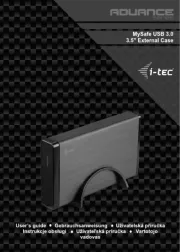
26 Juli 2025
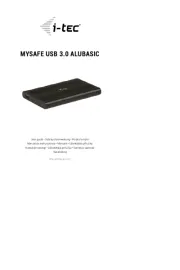
25 Juli 2025
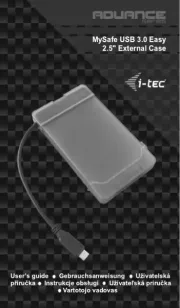
15 Juli 2025
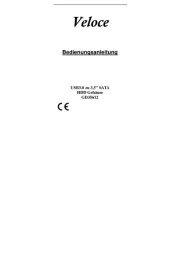
14 Juli 2025
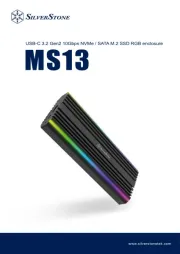
22 Mei 2025
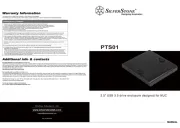
22 Mei 2025
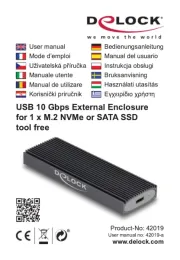
14 Mei 2025
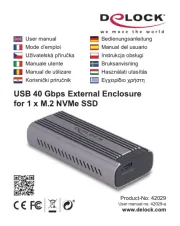
14 Mei 2025